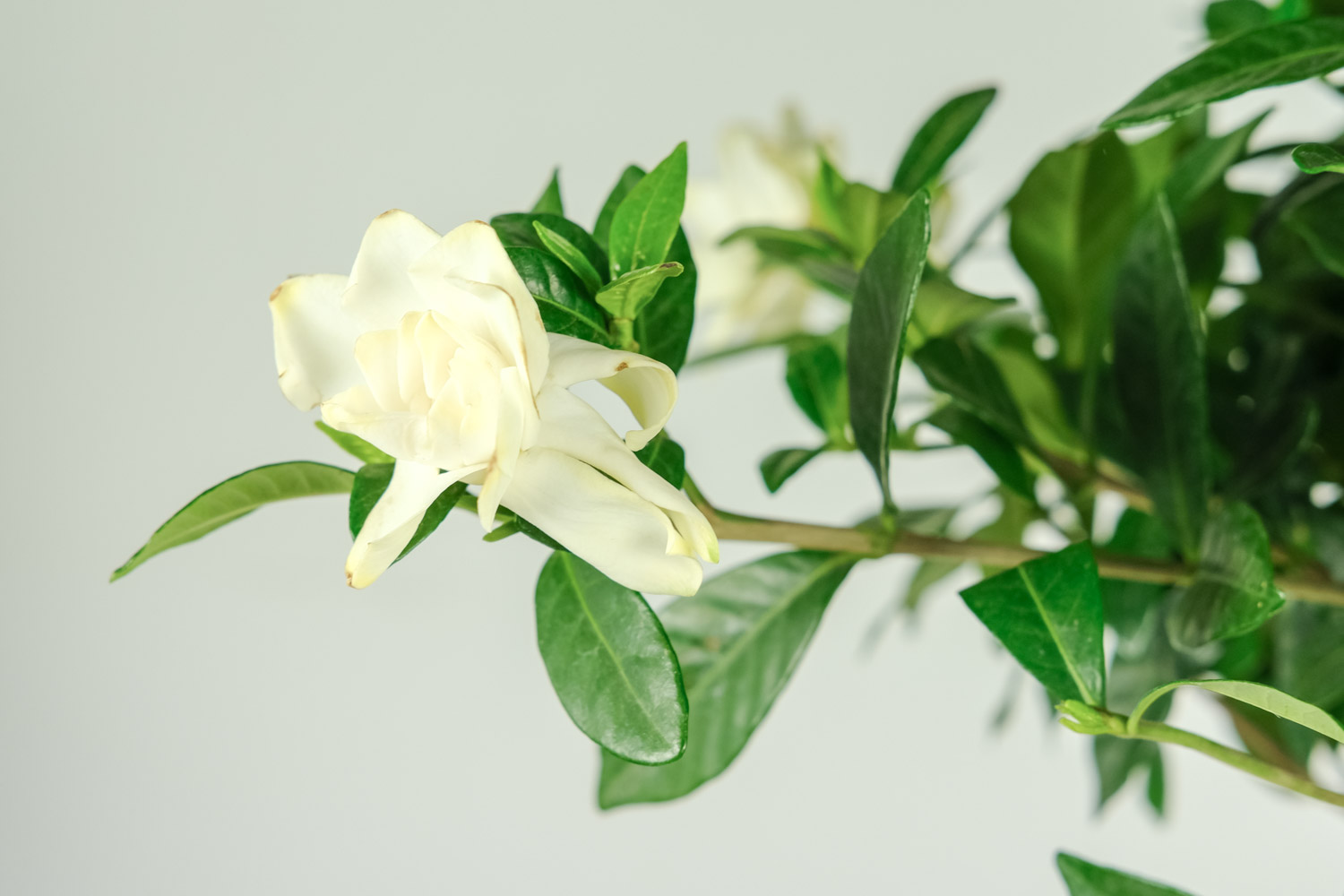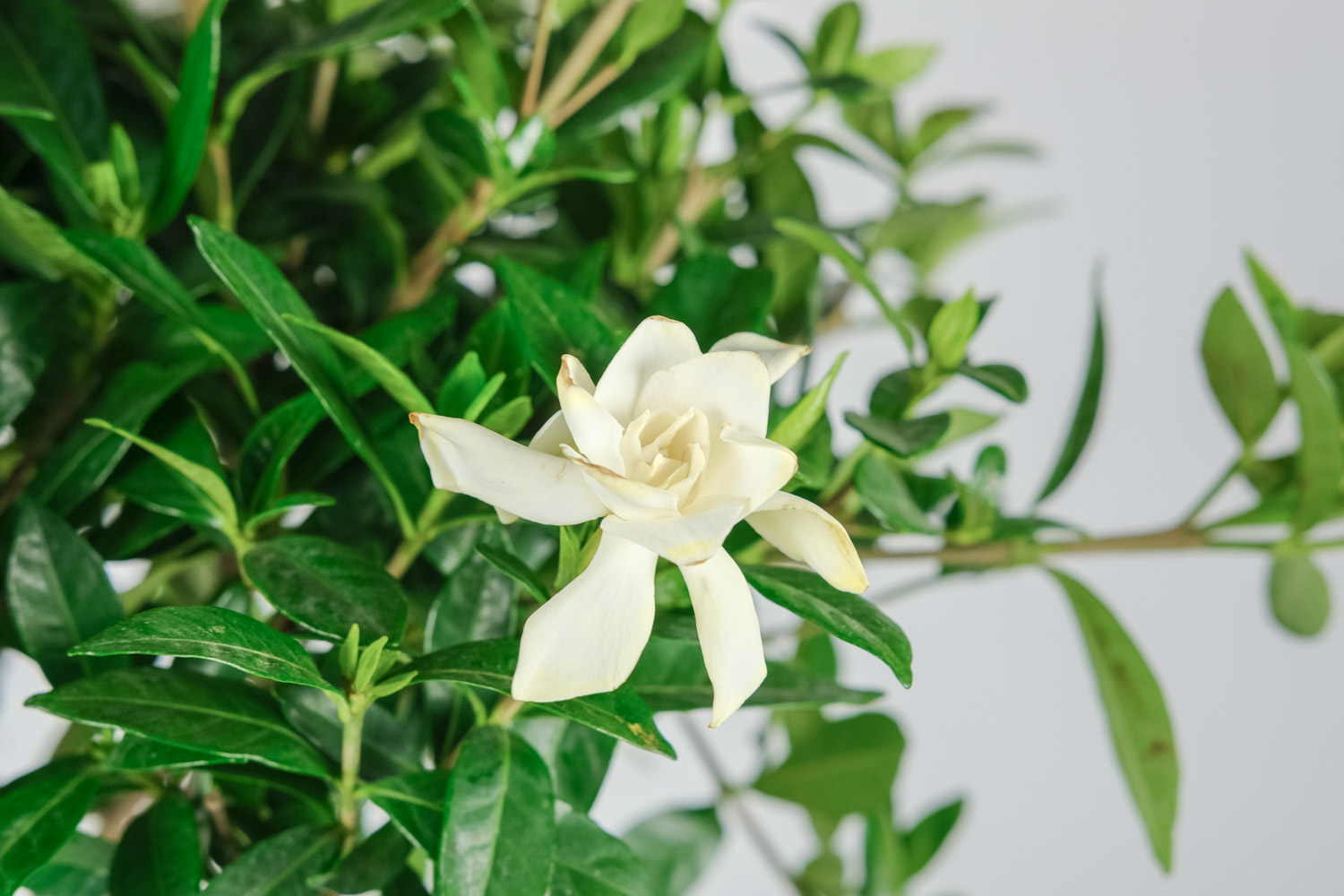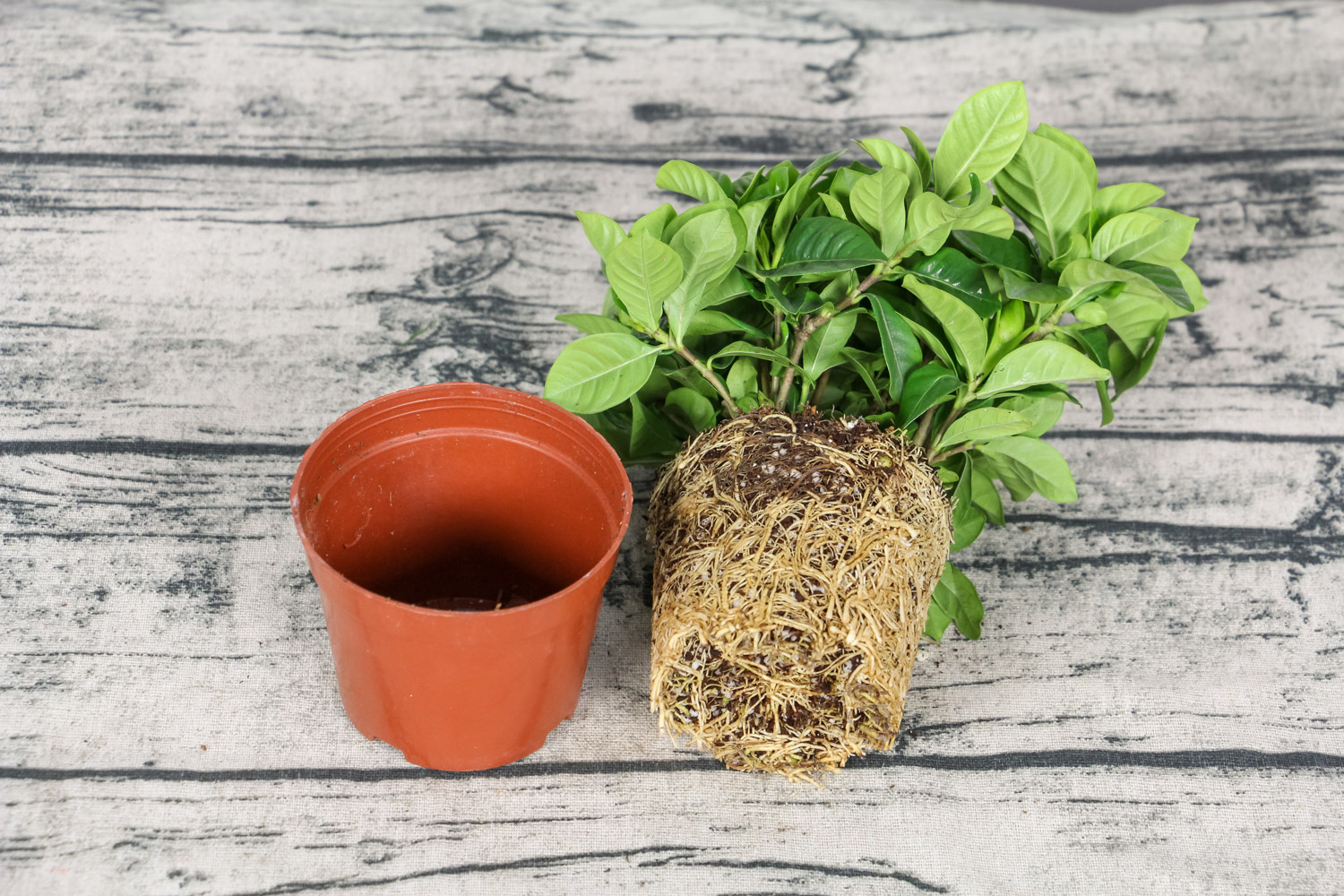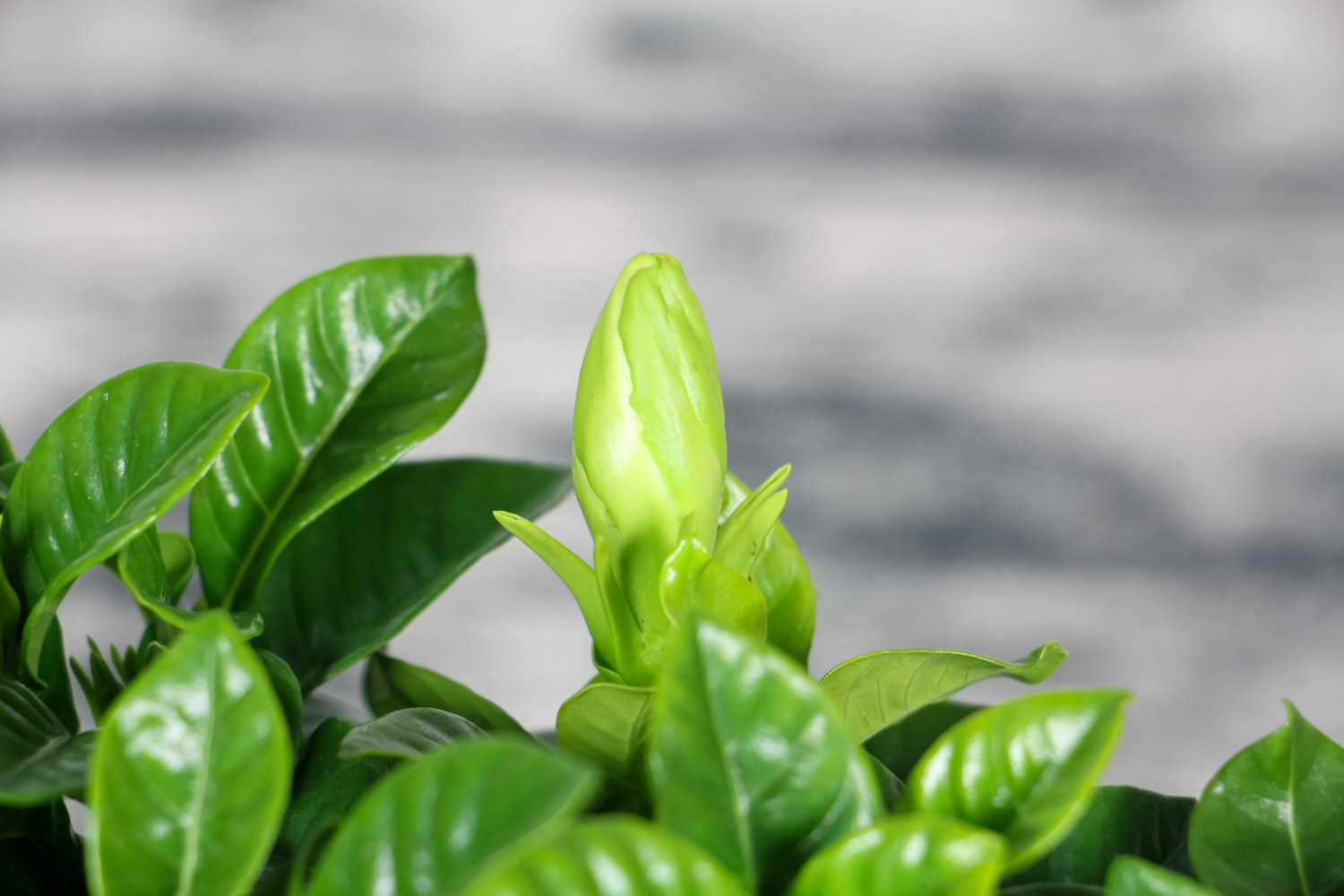1、 Soil preparation
Gardenia like breathable, fertile and acidic soil. It is necessary to prepare appropriate substrate during breeding. Peat soil and rotten leaf soil can be mixed when mixing soil, and the proportion is 1:1, which can basically meet the demand. Peat soil, perlite and vermiculite can also be mixed in the proportion of 4:1:1, and finally mixed with an appropriate amount of pine needle soil to make the soil acidic, so that the prepared soil is conducive to growth
2、 Illumination
Gardenia needs light during its growth. It likes light and has certain shade tolerance. Usually it's best to put it in a bright place and get more sunshine, which can promote better flowering. The light in summer is too strong, so it needs to be blocked in time. Do not expose to the sun to avoid burns. The light is very soft after winter. It's best to give full sunshine at this time

3、 Watering
Gardenia needs a lot of water in the peak growth season. It needs to be watered frequently to make the soil moist. It is not resistant to waterlogging. When watering, it is also necessary to control the amount of water. It is OK to pour it thoroughly every time, and no ponding is allowed. It also has requirements for air humidity. If the climate is dry, it needs to spray water frequently
4、 Fertilization
Gardenia is a kind of fertilizer loving plant. It must be topdressed in the growing season. Choose diluted compound fertilizer solution as fertilizer. Water it once every half a month and apply thin fertilizer frequently to promote more vigorous growth. Note that fertilizer should be stopped after flowering, otherwise it is easy to cause flower falling

5、 Temperature
Gardenia likes warm environment, and its cold resistance is very poor, especially for pot maintenance. After winter, the potted plants need to be moved indoors, and the indoor temperature should be controlled above 10 ℃, so that they can survive the winter safely. When the high temperature in summer exceeds 32 ℃, we should also pay attention to strengthening ventilation and watering frequently to help it cool down
6、 Change Basin
1. Time: it should be changed in March in spring and around October in autumn. The climate and temperature are more appropriate, which can reduce the damage to gardenia and promote it to adapt to the new environment and resume growth as soon as possible
2. Methods: for Gardenia ready to change pots, water should be cut off in advance to facilitate basin removal. Changing pots should be carried out together with root pruning, which is conducive to later growth. Cut off its withered roots, old roots, weak roots and rotten roots, and disinfect them. Prepare larger flowerpots and prepare soft, breathable and fertile soil. After treatment, carefully plant it into the soil, gently compact the soil after planting, and water it in time. After maintenance in a warm and well ventilated environment, you can take the basin in about a week and return to normal growth

7、 Pruning
Gardenia jasminoides has strong germination ability and needs to be trimmed in time during maintenance. In the peak growth season, the Yellow branches and pest branches shall be cut off in time. The over dense and thin branches shall be properly thinned to promote better ventilation and light transmission inside. At the beginning of germination in early spring, the buds at the top of the main branch should be removed in time to promote the germination of more lateral branches. After the flowering period, the remaining flowers need to be trimmed in time to promote the recovery of growth as soon as possible. In addition, it is necessary to cut again in winter and cut off unnecessary branches, which is conducive to overwintering and germination next year
8、 Reproduction
1. Cutting method: the branches of Gardenia are easy to take root, and cutting method is one of the common propagation methods. Usually in spring and autumn. Cuttings should be strong and mature. When cutting, the treated cuttings can be inserted into the container containing water, and the water can be changed frequently to ensure the clean water quality, so that they can take root in two or three weeks. After rooting, it is inserted into the matrix, so that the survival rate is higher, and water cutting is much better than soil cutting
2. Layering method: layering method: before and after the Qingming Festival, select one-year strong branches from three-year-old sows, with a length of 25 to 30 cm. Pull the branches to the ground, cut the buried part, cover it with soil and compact it. It can take about 20 to 30 days to take root and survive

Causes and treatment of yellow leaves of Gardenia
1. Watering too much: Although Gardenia likes humid environment, it is not resistant to waterlogging. If watering is too much to absorb, it is easy to Rett roots, resulting in yellow leaves and fallen leaves. It is necessary to drain water as soon as possible, strengthen ventilation, loosen the soil frequently and evaporate water. In the later stage of watering, control the amount of water and moisturize it. Ponding is strictly prohibited
2. The light is too strong: Although Gardenia likes light, it is afraid of strong light. If it is exposed to direct light for a long time, it is easy to get sunburned and yellow leaves fall. It is necessary to move to a semi shady and ventilated place as soon as possible, cut off the yellow leaves, provide a warm environment and promote recovery as soon as possible
4. Temperature is too low: Gardenia has poor cold resistance. If the temperature cannot be well controlled in winter, it may be frostbitten under the environment of about 5 ℃ for a long time, resulting in yellow leaves and even falling leaves. We should move to a warm place as soon as possible and control the temperature above 10 ℃, so as to stop the freezing injury and continue to restore growth in the coming year
5. Improper fertilization: Although Gardenia likes fertilizer, it is afraid of thick fertilizer. When the fertilizer concentration is high, it is easy to burn the root system, and it is easy to cause yellow leaves if the fertilizer concentration is high. It is necessary to wash the fertilizer with clean water as soon as possible, and change the soil when it is serious, so as to avoid the further aggravation of fertilizer damage

Causes and treatment of non flowering Gardenia
1. Lack of light: Gardenia does not bloom may be caused by lack of light. Long term exposure to shade will affect flower bud differentiation and lead to non flowering. It needs more sunshine to meet the demand for light before it can be opened smoothly
2. Lack of nutrients: Gardenia is a fertilizer loving plant. Especially before and after flowering, it must meet the demand for nutrients before it can bloom smoothly. It is suggested to apply phosphorus and potassium fertilizer before flowering, and spray diluted potassium dihydrogen phosphate solution on the plant to promote better flowering
3. Soil discomfort: it likes a slightly acidic soil environment. If the soil used is too alkaline, it will affect growth and flowering. Ferrous sulfate should be watered as soon as possible to improve soil acidity. We should also loosen the soil frequently to promote the root system to breathe better, so as to grow and blossom better

 how many times do yo...
how many times do yo... how many planted tre...
how many planted tre... how many pine trees ...
how many pine trees ... how many pecan trees...
how many pecan trees... how many plants comp...
how many plants comp... how many plants can ...
how many plants can ... how many plants and ...
how many plants and ... how many pepper plan...
how many pepper plan...


























